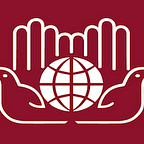Beauty: The Forgotten Necessity in Disaster Relief Contexts
June 21, New York, New York — At the Design for Humanity Summit II, in partnership with the International Organization for Migration, humanitarians across all domains of the discipline engaged in analytical dialogue around the motif of design in the time of displacement. Discussion ranged from particular topics as structures of refugee settlements and technological storytelling to the more abstract, including the psychological implications of spatial environments, edges, and walls.
In the first panel titled From Camps to Communities, Moderator Brian Kelly introduced the guiding theme of the next hour-and-a-half: the lane of design and how it can contribute to greater resilience and engagement amongst communities. He likewise made a compelling point that stayed heavily with the audience throughout, adding subtle darkness to the room: “A space designed to be temporary is so often not.”
The first speaker introduced was Raul Pantaleo, an Italian architect who co-founded Studio TAMassociati, which specializes in socially-oriented projects in conflict zones or afflicted environments. He sought to interpret human reconstruction and humanitarian aid from an aesthetic and symbolic point of view. Such an approach is typically peculiar in disaster responses, as responders tend to designate resources toward physical needs of food, shelter, etc. Yet, he reiterated time and time again that it is critical to allocate resources toward aesthetic and symbolic essentials as well.
In Pantaleo’s experience, aesthetic needs have an intrinsic link to beauty; often, it is so easy to forget that, without beauty, the displaced experience pronounced psychological suffering. That is, the absence of beauty triggers psychological pain, which is largely compounded with the already-present physical and emotional discomfort.
Pantaleo argues that the manipulation of three humanitarian tools on the ground can better implement beauty in these spaces: 1) the use of color; 2) the use of nature; and 3) the use of physiognomy. When resources are scarce, color is an excellent tool because it costs very little, disrupts monotony, and instills hope and happiness (color has a profound impact on the subconscious). Nature, on the other hand, represents life, care, serves as a potent activator of social life, is cheap to work with, and is beneficial with regard to climate mitigation. Nature, ultimately, has historically functioned as a place where people gather; if a tree exists, social gatherings often take place around said tree. Likewise, green is a symbol of care; Pantaleo boasted that ‘To have green is to have care.’ Lastly, using physiognomy in building spaces links new construction sites with local cultural symbols (helps to create a dialogue with the displaced).
Beauty and design, in short, should not be an afterthought but rather embedded in the humanitarian process. Design, too, does not necessarily ramp up additional and unnecessary costs: to plant a tree or choose a bright, vibrant color does not make a monetary imbalance. It is crucial to recognize that design makes a difference; it helps the displaced recognize that where they’re staying is both comfortable and pleasant, allowing a sliver of hope to manifest.
Written By: Scarlett Aylsworth, Refuge Press Intern, Summer 2019
About the IIHA:
The Institute of International Humanitarian Affairs (IIHA) prepares current and future aid workers with the knowledge and skills needed to respond effectively in times of humanitarian crisis and disaster. Our courses are borne of an interdisciplinary curriculum that combines academic theory with the practical experience of seasoned humanitarian professionals. The IIHA also publishes on a wide range of humanitarian topics and regularly hosts a number of events in the New York area, including the annual Humanitarian Blockchain Summit and Design for Humanity Summit.
For media inquiries, please contact: Camille Giacovas, Communications & Research Officer, IIHA cgiacovas@fordham.edu
